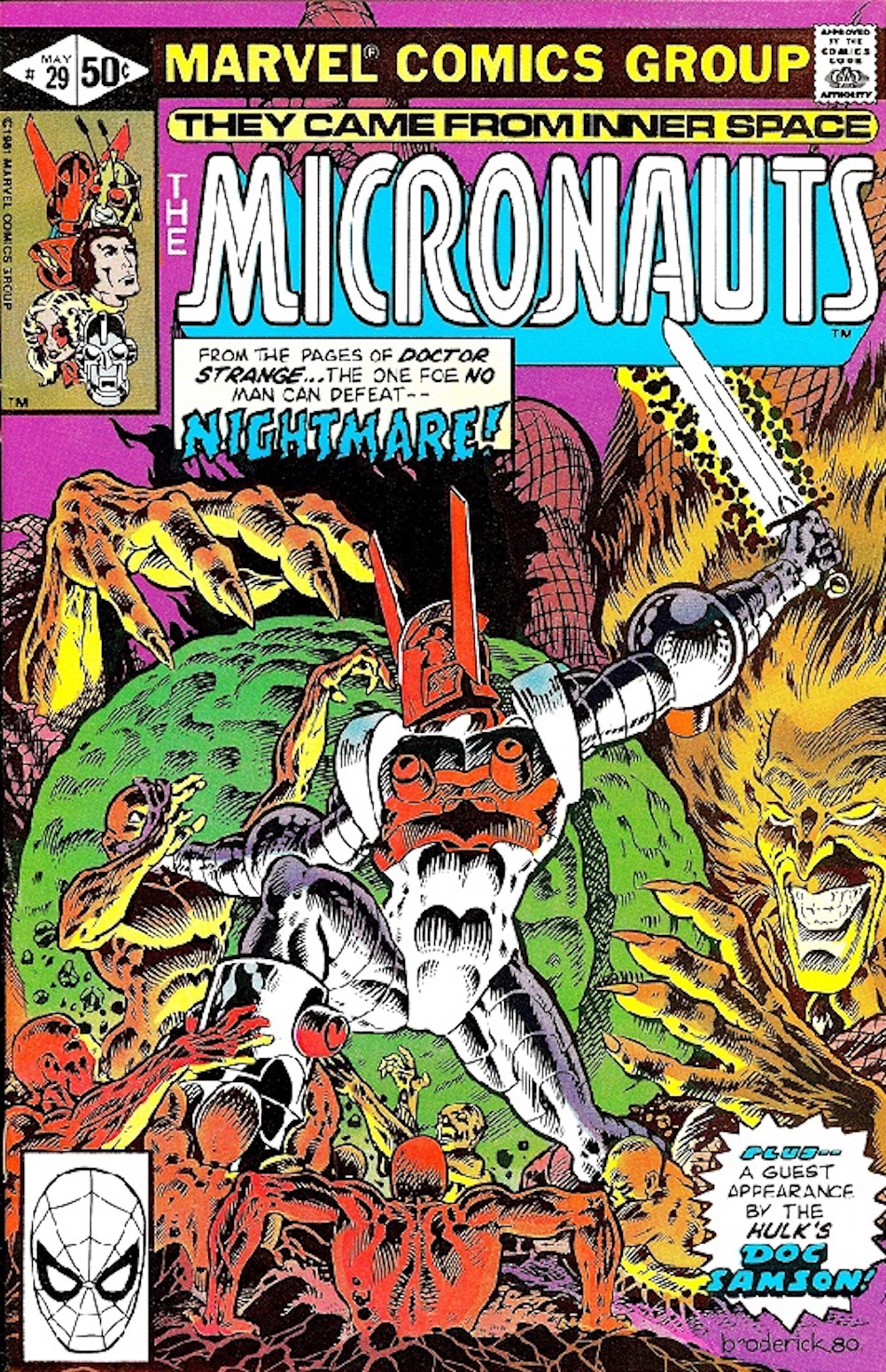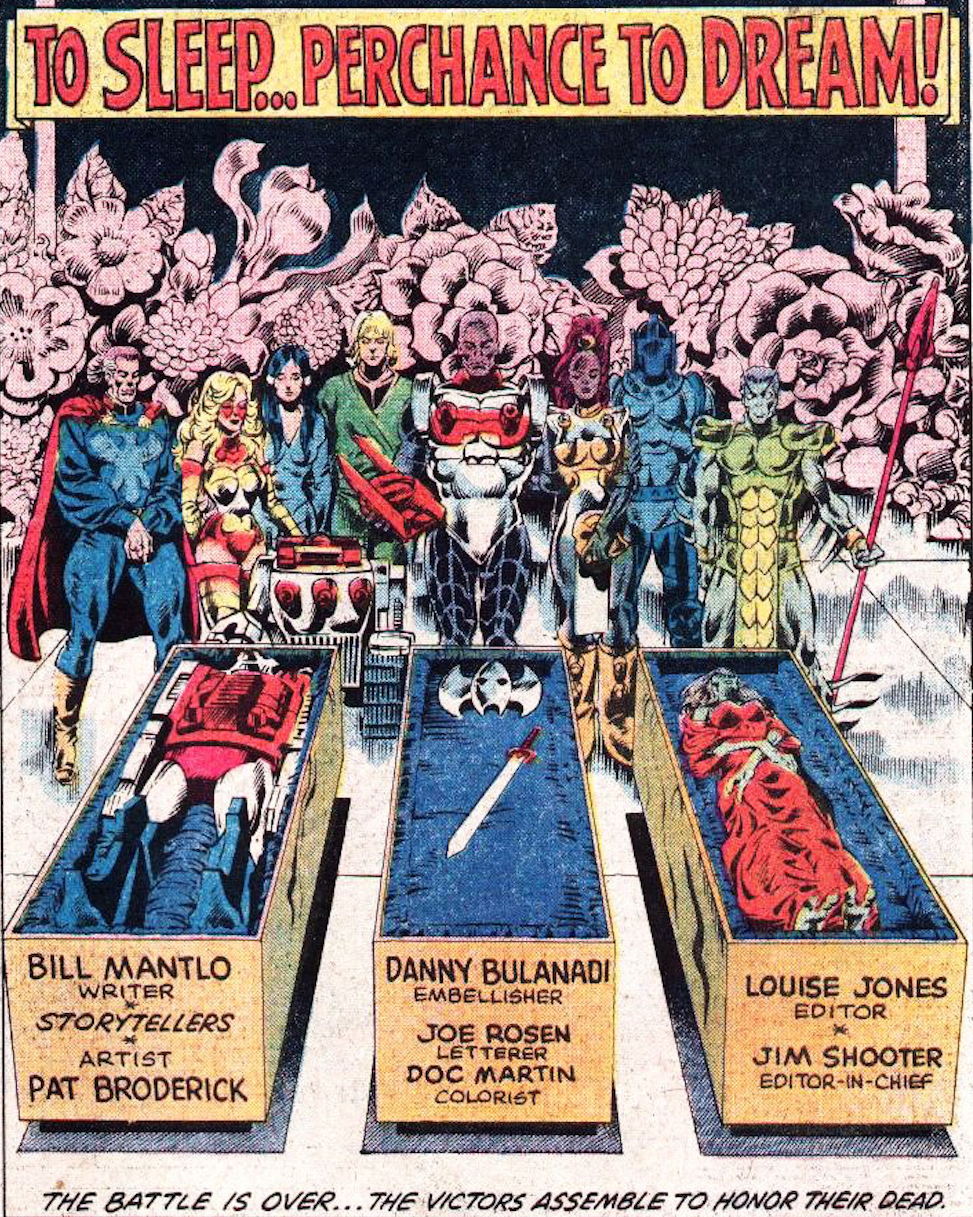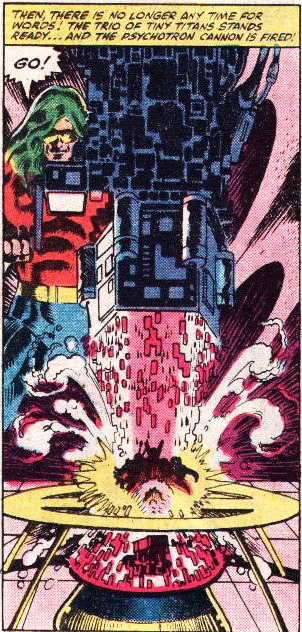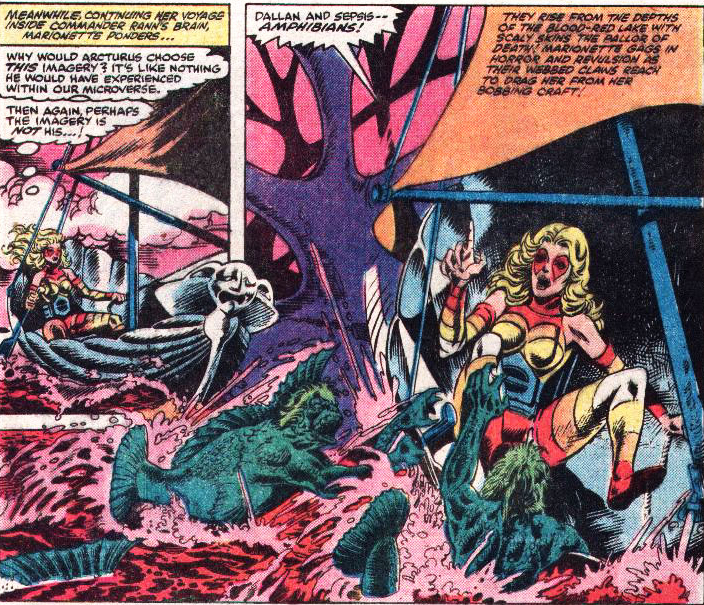
Digging back forty years ago, The Micronauts Take a Fantastic Voyage to save Themselves.
What Bill Mantlo did to The Micronauts series up to this point in Marvel’s venture is nothing short of stunning. Taking a snippet of what Takara created and Mego popularized in the 1970s, Mantlo expanded the toy line into a rich and detailed alternate universe. He not just brought into focus various elements of the Marvel Universe to help enrich an already complex story; he expanded Marvel’s basic superhero premise with weird and strange dynamics that diverge from the typical Marvel superhero philosophy—“Defeat the enemy for the greatest good, save humankind, good naturally prevails.” It’s still mostly here in this issue but more creatively accomplished.
Mantlo’s influence from Roy Thomas’s work with Doctor Strange is apparent in issue #29; we get one of the more impressively chaotic storylines thus far in the series. “To Sleep. . . Perchance to Dream” is a glorious achievement of surrealistic science fiction.

Initiated by Nick Fury and his agents of S.H.I.E.L.D., we begin the issue with a sense of officiality to Biotron’s death. The Micronauts mourn, and the gap between the Microverse and the human world is bridged. All of this stems from a battle against Baron Karza as Prince Shaitan, general of Baron Karza’s army, summoned the Worldmind to help Karza overthrow the Master. In this event of overzealous power, the spectacle did not come without cost. And, with the results lies a comatose Commander Rann caused by an evil energy that has tapped into the commander’s mind.
In comes psychologist Dr. Leonard Samson, who is brought in by S.H.I.E.L.D. to help save the commander’s life. Here is where Mantlo taps into Asimov and offers a solution that entails shrinking The Micronauts from their already micro size and blasting them into the commander’s brain using a psychotron cannon.

This is where things get weird and turn into a proverbial acid trip. What starts out as an Arthur Conan Doyle-esque adventure through the cerebrum turns into a weird psychotronic mind meld that contorts with each crew member’s personal memory. It’s these conjurings that will eventually try to kill them unless the crew saves Commander Rann first.
In the midst of all of this is Pat Broderick’s artwork that blends memory with the hive of the cerebrum. The work is fantastical while being futuristically fearful. Doc Martin’s colorization of the scenes in alienated tones are a spectacle in itself that should be revitalized in a high-quality reissue. We only get the first five issues collected in a trade paperback that was released back in 2003. The only enemy to both the story and art is space. Page length plays a role into how brief memory and nightmare play a role. Mantlo does a great job of dealing with the crossroads of conflict, but limitation to a single issue is the Achilles heel. Too much real estate was used to build up the 911 call that the actual climax is almost glossed over.

It’s a race against time to wake Commander Rann up and save him and The Micronauts from being destroyed. What we end up with in this issue is a transition piece. The front end poses a finality, but the back end prophesizes the future. What the crew and Rann (yes, he does wake up) finally discover is a foreboding subconscious message from a strange hieroglyphic monolith left inside his brain. And at this point, we realize this issue was just a buildup all along. Mantlo just took the scenic route with the expectation that everything would fall into place.
Why have we never experienced a feature film on The Micronauts and the Microverse? We got a glimpse of the Microverse in 2015’s Ant-Man. If expanded from its original nature, issue #29 could transform into a magnificent cinematic event. For now, we have Mantlo’s work to enjoy like a strange Asimov concoction for the Marvel Universe.



No Comment! Be the first one.